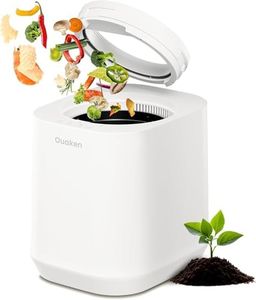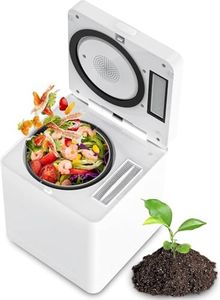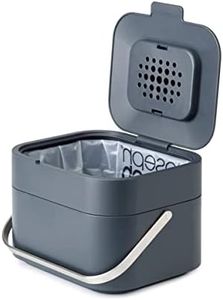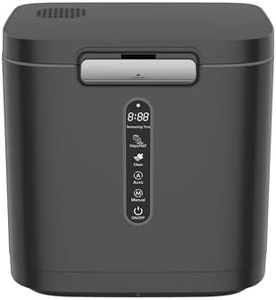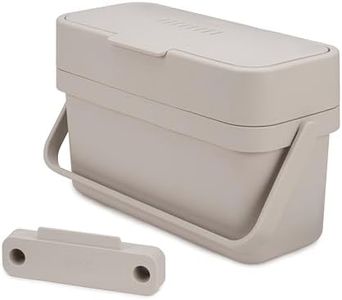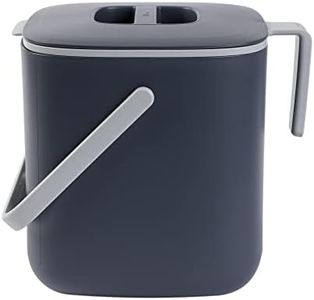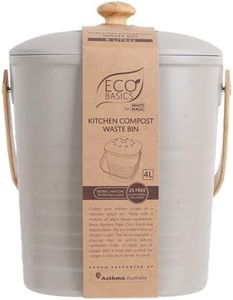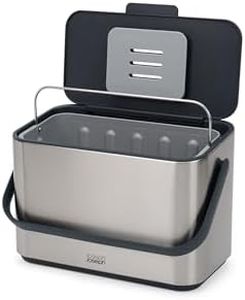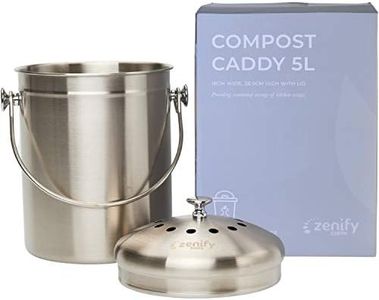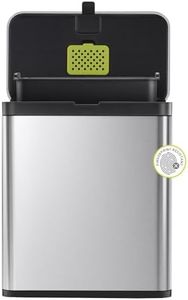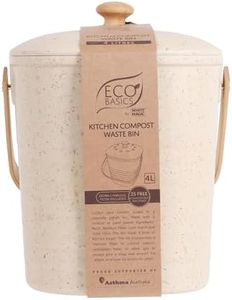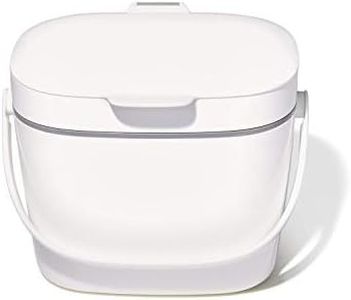We Use CookiesWe use cookies to enhance the security, performance,
functionality and for analytical and promotional activities. By continuing to browse this site you
are agreeing to our privacy policy
10 Best Kitchen Compost Bins
From leading brands and best sellers available on the web.Buying Guide for the Best Kitchen Compost Bins
Choosing a kitchen compost bin can make a big difference in how easy and pleasant it is to collect food scraps before transferring them outdoors or to a composting service. The best compost bin for you depends on your kitchen habits, space, and how often you dispose of scraps. Focusing on the core features will help you find a bin that keeps smells at bay, fits conveniently in your kitchen, and is easy to use and clean.Size/CapacityThe size or capacity of a kitchen compost bin refers to how much waste it can hold, usually measured in liters or gallons. This is important because it dictates how frequently you'll need to empty it. Bins under 1 gallon are compact and perfect for small households or those who cook infrequently, while bins between 1–2 gallons cater to average families and daily cooks. Larger bins above 2 gallons might suit big families or enthusiastic cooks but can become heavy or hold waste too long, risking odors. Your choice should reflect how much food waste you typically generate and how often you want to empty it—go smaller if you empty daily, larger if you need a little more time between trips.
MaterialThe material of your bin (commonly stainless steel, plastic, or ceramic) influences durability, weight, smell control, and cleaning ease. Stainless steel resists stains and odors and is durable, making it good for long-term use. Plastic is lightweight and usually cheaper but may absorb odors over time. Ceramic can be attractive and neutralize odors but is heavier and can break if dropped. Consider your priorities: if durability and smell control are key, stainless steel is a good pick; if weight and easy-moving are important, plastic fits; ceramic can be good if you value aesthetics.
Odor ControlOdor control refers to the bin's ability to trap and neutralize unpleasant smells. Many bins offer lids with charcoal or carbon filters, which absorb odors, while others have tightly sealing lids to keep smells contained. Some bins are completely open or just have a loose-fitting lid, which means odors may escape quickly. If you’re sensitive to smells or keep the bin somewhere prominent, choose a model with effective filtering or tight seals. If you empty your bin often, a simple lid may be enough.
Ease of CleaningEase of cleaning is about how simple it is to wash and maintain your compost bin. Removable liners, dishwasher-safe bins, and smooth, non-porous surfaces help make cleaning easier and keep odors from lingering. Bins with fewer crevices and components are generally easier to clean. If you want to minimize maintenance and keep things sanitary, pick a model with smooth surfaces, simple parts, and one that fits your preferred cleaning method.
VentilationVentilation controls how much airflow enters the bin, affecting decomposition and odor. Bins with ventilation allow air to flow, which can prevent mold and reduce smells but may attract fruit flies if not managed. Fully sealed bins contain odors better but can trap moisture, leading to soggy waste and unpleasant smells if not emptied frequently. If you plan to keep scraps for a few days, mild ventilation can be helpful; for daily emptying, a sealed bin suffices.
Liner CompatibilityLiner compatibility means whether the bin fits compostable liners or bags, which can help keep the bin cleaner and make emptying easier. Some bins are designed for specific liner sizes while others are flexible or don’t require liners. If you dislike washing bins or want a tidy process, pick a bin that fits standard compostable liners or check if the model recommends certain sizes for best results.
